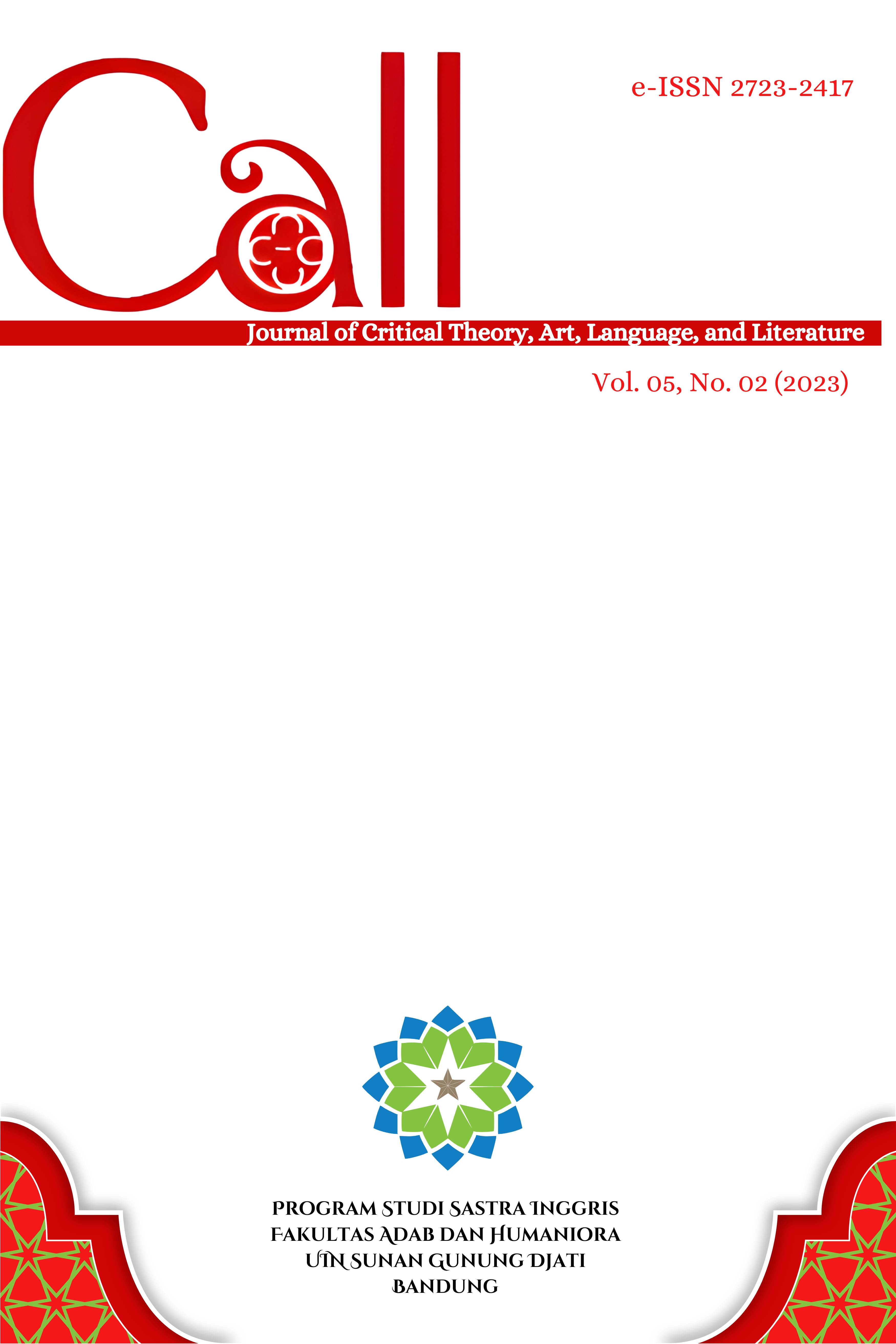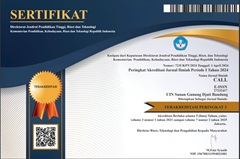POLYSEMY IN FROZEN (2013) MOVIE
DOI:
https://doi.org/10.15575/call.v5i2.18569Abstract
Objectives of this study were to analyze types of polysemy in the and to interpret polysemous words realized in the Frozen movie script. A method of this study was qualitative that produced descriptive data. The data were words that contained polysemy. A source of data in the study was Frozen (2013) movie scripts. The data were analyzed using suitable theories, including the type of polysemy proposed by Apresjan (1974) and meaning proposed by Lyons (1981). Based on the analysis, it was found that there are 26 pairs of data of polysemy that consist of two types of polysemy; 20 pairs of data are regular polysemy and six pairs of data were irregular polysemy. In the Frozen movie script, regular polysemy is more dominant than irregular polysemy because regular polysemy has the same systematic word but is different semantically or non-synonymous. Meanwhile, irregular polysemy has the same or true meaning as other words, and even it has no systematic relation. In conclusion, polysemy can arise in spoken or written language, so that the ambiguous word that have more than one meaning are categorized into polysemy.
Â
Â
Keywords: polysemy, meaning, frozen, movie script, semantics
References
Cropley, J. A. (2002). Qualitative research methods: an introduction for students of psychology and education. Riga, Latvia: Zinatne.
Dilapanga, R., Bay, I, W., & Saud, J. (2022). Polysemy in Justin Bieber’s song lyrics. Jambura Journal of English Teaching and Literatur, 3(1), 41-48.
Dolling, J. (2018). Systematic Polysemy.
Edelheim, J. R. (2007). Hidden messages: a polysemic reading of tourist brochures. Journal of Vacation Marketing, 13(1), 5-17.
Effendy, O. U. (1986). Dimensi dimensi komunikasi. Bandung: Alumni.
Jaelani, A., & Zabidi, O. W. (2020). Junior high school students’ difficulties of English language learning in the speaking and listening section. Journal of English Language Teaching, 9(1), 45-54.
Klein, D. K., and Murphy, G. (2001). The representation of polysemous words. Journal of Memory and Language, 45(2), 259–282.
Klein, D. K., and Murphy, G. 2002. Paper has been my ruin: conceptual relations of polysemous senses. Journal of Memory and Language, 47(3), 548 –570.
Kreidler, C. W. 1998. Introducing English semantic. London: Routledge.
Lyons, J. (1981). Semantics 1--2. London: Cambridge University Press.
McManis, C. et al. (1987). Language files. USA: Advocate Publishing Group.
Riemer, N. 2010. Introducing semantics. New York: Cambridge University Press.
Novikov, A. L. (2019). Polysemy.
Palmer. (1981). Semantics. Cambridge: Cambridge University Press.
Peterson, P. L. (2018). Intermediate quantities: logic, linguistics and Aristotelian semantics. New York, USA: Routledge.
Retnomurti, A. B. (2021). English homonym and polysemy words through semantic approach: novels woy & the dancer. DEIKSIS Journal of Universitas Indraprasta PGRI, 13(1), 21–35.
Saeed, J. I. (2003). Semantics (Second Edition). Oxford, United Kingdom: Blackwell Publishing.
Saeed, J. I. (2016). Semantics. Chichester: Blackwell.
Siahaan, A., & Sinaga, Q, Z. (2020). Values of Islamic education in film bilal: a new breed of hero by ayman jamal. Journal of Education, 5(1), 95–105.
Downloads
Published
Issue
Section
Citation Check
License
Authors who publish in CALL agree to the following terms:
- Authors retain copyright and grant the journal right of first publication with the work simultaneously licensed under Attribution-ShareAlike 4.0 International (CC BY-SA 4.0) License that allows others to share the work with an acknowledgment of the work's authorship and initial publication in this journal.
- Authors are able to enter into separate, additional contractual arrangements for the non-exclusive distribution of the journal's published version of the work (e.g., post it to an institutional repository or publish it in a book), with an acknowledgment of its initial publication in this journal.
- Authors are permitted and encouraged to post their work online (e.g., in institutional repositories or on their website) prior to and during the submission process, as it can lead to productive exchanges, as well as earlier and greater citation of published work (See The Effect of Open Access).




